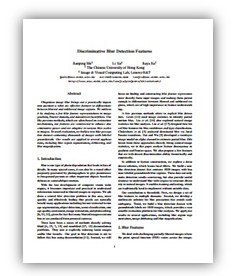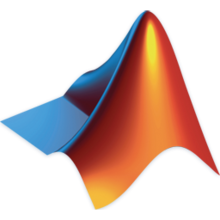Saliency Tree: A Novel Saliency Detection Framework
Saliency Tree: A Novel Saliency Detection Framework
Zhi Liu1
Wenbin Zou2
Olivier Le Meur3
Image and Video Processing LAB,Shanghai University1
College of Information Engineering, Shenzhen University2
University of Rennes,France3
Abstract
This paper proposes a novel saliency detection framework termed as saliency tree. For effective saliency measurement, the original image is first simplified using adaptive color quantization and region segmentation to partition the image into a set of primitive regions. Then, three measures, i.e., global contrast, spatial sparsity, and object prior are integrated with regional similarities to generate the initial regional saliency for each primitive region. Next, a saliency-directed region merging approach with dynamic scale control scheme is proposed to generate the saliency tree, in which each leaf node represents a primitive region and each non-leaf node represents a non-primitive region generated during the region merging process. Finally, by exploiting a regional center-surround scheme based node selection criterion, a systematic saliency tree analysis including salient node selection, regional saliency adjustment and selection is performed to obtain final regional saliency measures and to derive the high-quality pixel-wise saliency map. Extensive experimental results on five datasets with pixel-wise ground truths demonstrate that the proposed saliency tree model consistently outperforms the state-of-the-art saliency models.
Saliency Tree Model

Flowchart of the proposed saliency tree model
Results

Examples of saliency detection on MSRA dataset. (a) images(IM), (b) ground truths(GT) and (c)-(n) saliency maps generated using different models (ST is the proposed saliency tree model)..
Quantitative Comparison


>
Quantitative comparison. ROC curves (top) and PR curves (bottom) of different saliency models on MSRA dataset .


AUC values (top) and F-measures (bottom) achieved using different saliency models on all the five datasets .
Citation
Z. Liu, W. Zou, and O. Le Meur, “Saliency tree: A novel saliency detection framework,” IEEE Transactions on Image Processing, vol. 23, no. 5, pp. 1937-1952, May 2014.
@ARTICLE{SaliencyTree_TIP2014,
author={Liu, Zhi and Zou, Wenbin and Le Meur, Olivier},
journal={IEEE Transactions on Image Processing},
title={Saliency Tree: A Novel Saliency Detection Framework},
year={2014},
month={May},
volume={23},
number={5},
pages={1937-1952},
doi={10.1109/TIP.2014.2307434},
ISSN={1057-7149},}
.
Downloads
 |
“Saliency tree: A novel saliency detection framework”
Z. Liu, W. Zou, and O. Le Meur,
IEEE Transactions on Image Processing, vol. 23, no. 5, pp. 1937-1952, May 2014.
 [Paper]
[Paper]
 [MATLAB Code] [MATLAB Code]
|